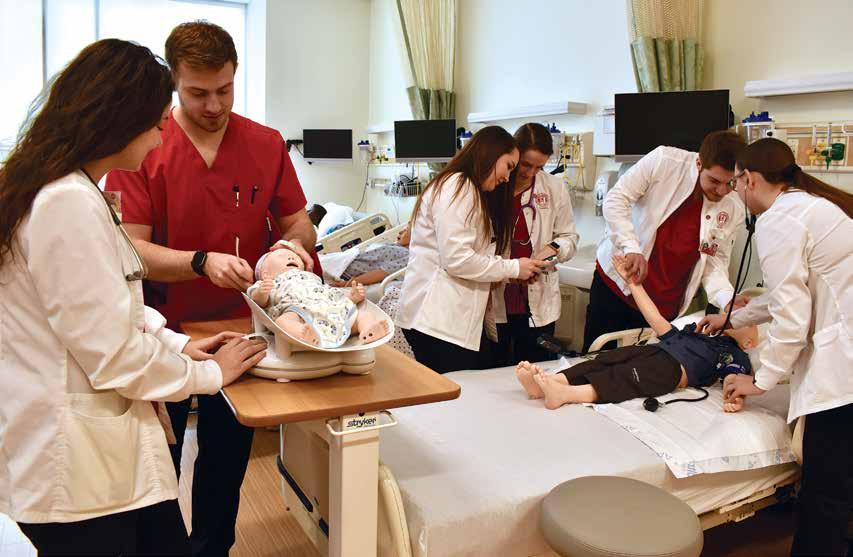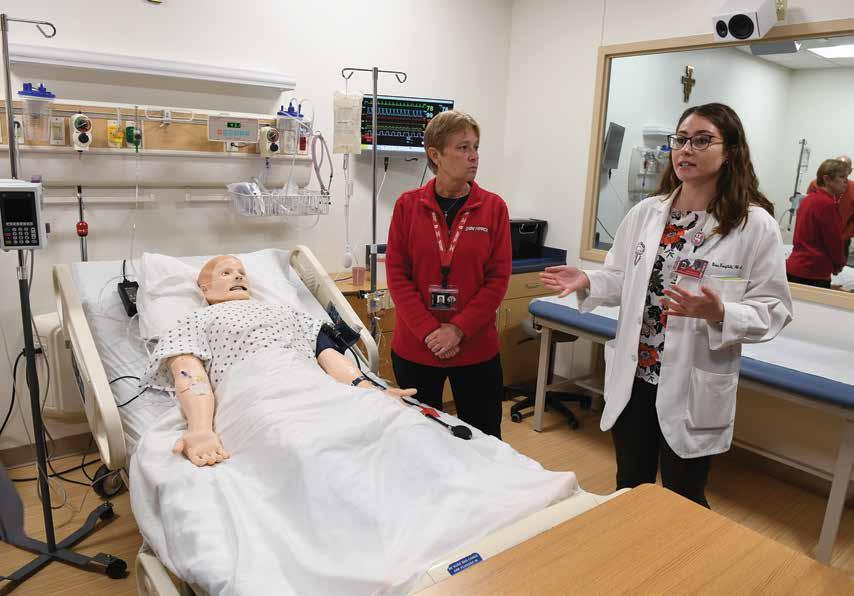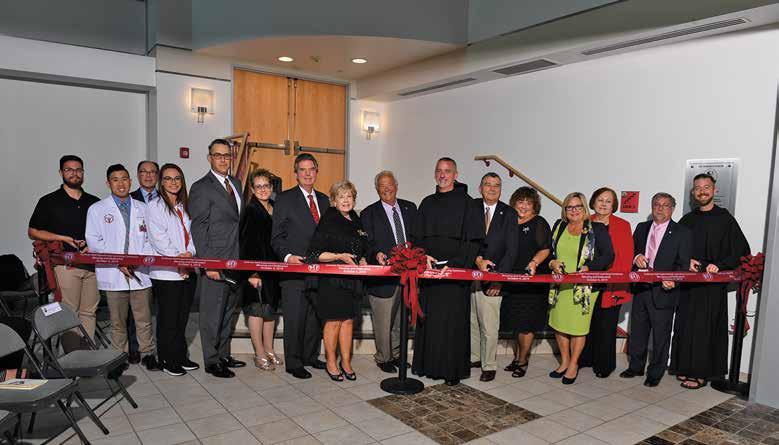
5 minute read
A New Home for Health Care
The groundbreaking Health Sciences Experiential Learning Commons is changing the way students learn and giving them an edge in the workforce.
STORY BY / Kara Illig, Lead Editor

The School of Health Sciences and Education recently added a 10,000-square-foot addition to the Sullivan Hall Expansion and Renovation Project that provides state-of-the-art classroom, laboratory and clinical education space to instruct students enrolled in the Health Sciences programs. The Health Sciences Experiential Learning Commons (or ELC, as it is known to the campus community), provides invaluable educational resources to students entering into health care professions.
— Brenda Martynuska Guzic, Director of the Experiential Learning Commons

The simulation and training provided in the ELC will give students the opportunity to engage in hands-on deliberate practice, to develop decision making skills, and to practice communication and teamwork techniques.
PREPARING STUDENTS FOR THE REAL THING
In addition to enhanced technological equipment, the ELC’s unique simulated spaces set it apart from other schools’ healthcare facilities. Students from all disciplines are able to work together inter-professionally, just as they would in an actual hospital or home setting. For example, Nursing, Physician Assistant Science and Physical Therapy students can collaborate in the Acute Care and Skills Labs on all phases of patient care from Urgent to Palliative.
In the Home Skills Lab, Occupational Therapy, Education, Psychology, and Social Work students can practice working together inside a patient’s home with a better understanding of the patient’s daily homecare needs.
“The ELC is a living space where interprofessional education is accessed and embraced by our students,” said Dr. Rita Trofino, Associate Dean of the School of Health Sciences & Education and Nursing Department Chairperson. “Because of these opportunities, our students are now more prepared, more confident, and more competent going into the workforce.”
This interdisciplinary approach to learning promotes better patient care and outcomes in the hospital setting, and more prepared health care professionals who are entering the field sooner.
A look inside
— Dr. Donald Walkovich, Dean, School of Health Sciences & Education

SIMULATION CENTERS
Five state-of-the-art simulation suites are being incorporated into the design that include a mock Emergency Room, Intensive Care Unit, Patient Room, Maternity Room, and Exam Room. The suites have the ability to be utilized simultaneously, feature computer-controlled manikins, and two-way audio-video conferencing. “Recently, I participated in a maternity simulation involving a mother with preeclampsia,” said Nursing student Lindsey Huether. “It was nerve-racking at first, but then I got into the groove. It was really helpful to have a place where I could apply my coursework in a clinical setting with low stakes.”

CLINICAL SKILLS LAB
Clinical Skills Lab. This 800-square-foot space facilitates learning by providing faculty and students with the setting, models, equipment, and supplies necessary to learn hands-on clinical skills, deliver patient care, and receive feedback in a safe environment. Dr. Michael Groman, Assistant Professor of Physical Therapy, explains how the programmed manikins make it possible for his students to hear heart and lung abnormalities, something they aren’t able to experience when practicing on their fellow students. “I have been able to create learning opportunities for the Physical Therapy students studying cardiopulmonary diagnoses which were impossible to simulate and perform before the ELC was available,” he said.

HOME CARE LAB
This state-of-the-art simulated living space affords students with the opportunity to problem solve aspects of patient care in a home setting. Featuring a bedroom, bathroom and kitchen, this simulated apartment provides students with a better understanding of the challenges of delivering care to patients with limited abilities, thus improving their capability to live independently.

Sullivan Hall Experiential Learning Commons Blessing and Dedication. October 4, 2019

MAKING IT OFFICIAL
More than 300 Saint Francis students, faculty, staff, board and community members gathered on Friday, October 4, 2019 for a ribbon cutting ceremony to celebrate the opening of the ELC. Dr. Donald Walkovich, Dean, School of Health Sciences & Education, spoke of the facility’s value: “In order to be ahead of the curve, we needed the Learning Commons to promote interdisciplinary work. This space transforms not only our teaching and learning capabilities, it transforms our students, and it will transform patient care and healthcare.”
A GENEROUS START
The $4 million construction project could not have been completed without the help of generous Saint Francis alumni. The University was blessed to receive $1 million in gifts from alumni and friends, and a $2 million anonymous donation that helped launch the project toward completion. The final $1 million was funded through the Redevelopment Assistance Capital Program (RCAP) Grant from the Commonwealth of Pennsylvania.
A recent generous $2.5 million anonymous donation will usher the project into its next phase, which will include the renovation of Sullivan Hall and the expansion of the on-site cadaver lab to provide hands-on human anatomical education to Physical Therapy and Physician Assistant Sciences students. To help move the second phase of this project forward, please contact Robert Crusciel ’86, Vice President for Advancement at rcrusciel@francis.edu or 814-472-3021.
> francis.edu/learningcommons

A RESOURCE FOR THE COMMUNITY
The ELC has generated interest from the community and local legislators. On September 30, U.S. Representative Glenn Thompson received a tour from Brenda Guzic (above left), Director of the Experiential Learning Commons, and Dr. Rita Trofino (above right), Associate Dean of the School of Health Sciences & Education and Nursing Department Chairperson. The congressman learned about the facility’s benefits for both students and industry professionals. EMS, firefighters, and other health care professionals will have the opportunity to use the simulation technology for continuing education.






